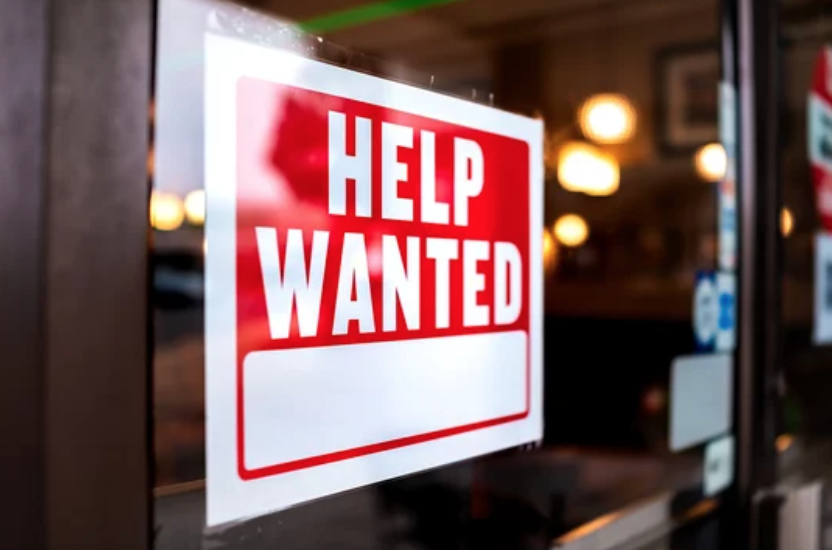
(GA Recorder) — Fewer Georgians filed initial unemployment insurance claims last month than in the weeks leading up to the pandemic last year, and the state’s unemployment rate hit 3.2%, a 20-year low.
Those are two welcome signs of economic recovery after record-breaking layoffs sent workers home across the state, but celebrations of those numbers should be tempered by the large number of Georgians quitting their jobs and not seeking new employment.
Nearly 3,900 Georgians filed initial unemployment claims during the week that ended Oct. 23, according to U.S. Department of Labor data, down more than 4,600 from the week before, and about 500 lower than the week ending March 7, 2020, not long before Gov. Brian Kemp issued a shelter in place order after patients with COVID-19 cases began to show up in Georgia hospitals. Fewer people are relying on unemployment aid as well – Georgia’s continuing claims fell by more than 76,000 to just over 39,000, according to the department’s latest numbers.
Kemp chalked those positive numbers up to his administration’s commitment to keeping Georgia businesses open when other states shut down to try to contain the pandemic.
“As the top state for business for an eighth straight year with an all-time low unemployment rate, Georgia’s economy is booming,” Kemp said in a statement last week. “Keeping Georgia open for business and getting people back to work has led to nearly 200,000 jobs added this year, record investment in communities across the state, and the fewest unemployed Georgians in 20 years. This historic news highlights the Peach State as the best place to live, work, and raise a family.”
But the unemployment rate only counts displaced workers actively looking for a new job. The disappointing aspect is that fewer Georgians are trying to enter the job market – the number of people in or seeking employment, or the labor force participation rate, still remains below pre-pandemic levels.
Georgia’s labor force participation rate fell .1% to 61.5% in September. That’s much higher than its low point of 59.4% the year before but still short of the 62.9% it reached in March 2020.
That difference equals more than 88,000 people no longer on the job since the start of the pandemic, said Georgia Center for Opportunity director of research Erik Randolph.
“But even this does not describe the full extent of the problem,” Randolph said. “Georgia’s economy was humming before the pandemic, and accounting for Georgia’s employment growth prior to the recession, around 240,000 workers have disappeared from the labor force. This shows that we still have much work to do to reinvigorate our economy and help people find employment that allows them to support themselves and their families and better their communities.”
In August of 2008, before the Great Recession hit, Georgia’s labor force participation rate was 68.7%.
More than 192,000 Georgians quit their jobs in August, an increase of 35,000 over the month before, a larger rise than in any other state, according to the Bureau of Labor Statistics. In total, more than 4% of Georgia workers quit their jobs that month, when the national quit rate was a record high 2.9%.
The trend was led by workers in the leisure and hospitality fields, 6.4% of whom left their jobs in August, according to BLS data, which may help explain the slower dining room service and numerous help wanted signs reported outside restaurants across the country.
And surveys suggest that the fall’s rise in COVID-19 cases is likely a big part of the decrease, said University of Georgia associate professor of economics Ian Schmutte.
“We do have some decent data on why people were not going to work in between August and September. We saw a small uptick in the number of people who said that they don’t want to be employed, but much larger increases in the number of people who said that they weren’t working because they themselves were sick, or they were caring for someone with COVID-19 symptoms,” he said. “The number of people who were not working because they were worried about getting sick also doubled, and these are statistics specifically for Georgia.”
Georgia’s COVID-19 case count, driven by the delta variant, peaked in late August, with the average number of cases reaching nearly 7,000 each day during the worst week, just as schools were getting back into session.
“We know that women, especially with young children, have found it very hard to be stably employed because child care is increasingly unreliable, and also, even when schools are open and in person, sometimes kids will need to get sent home to quarantine. Somebody’s got to take care of them, and that burden usually ends up falling on mothers,” Schmutte said.
Schmutte said he is hopeful the expected approval of pediatric COVID-19 vaccines and the current decline in cases will encourage people to get back to the workplace ahead of the busy holiday shopping season, which might already be threatened by transportation challenges.
“I think the bigger issue for holiday shopping this year is going to be the supply chain issues that are preventing goods from actually reaching store shelves, that’s going to affect online retailers as well,” he said. “But if we can get these 5- to 11- year-old kids vaccinated and people feel kind of comfortable going into stores and companies are willing to pay some significant holiday bonuses, then things could be more or less normal, in terms of holiday retail.
“That’s a lot of ‘ifs,’ I guess. But you know, if the big box stores just kind of end up forgoing Black Friday sales this year and more people stay home with their families on Thanksgiving, maybe that’s not the end of the world.”







